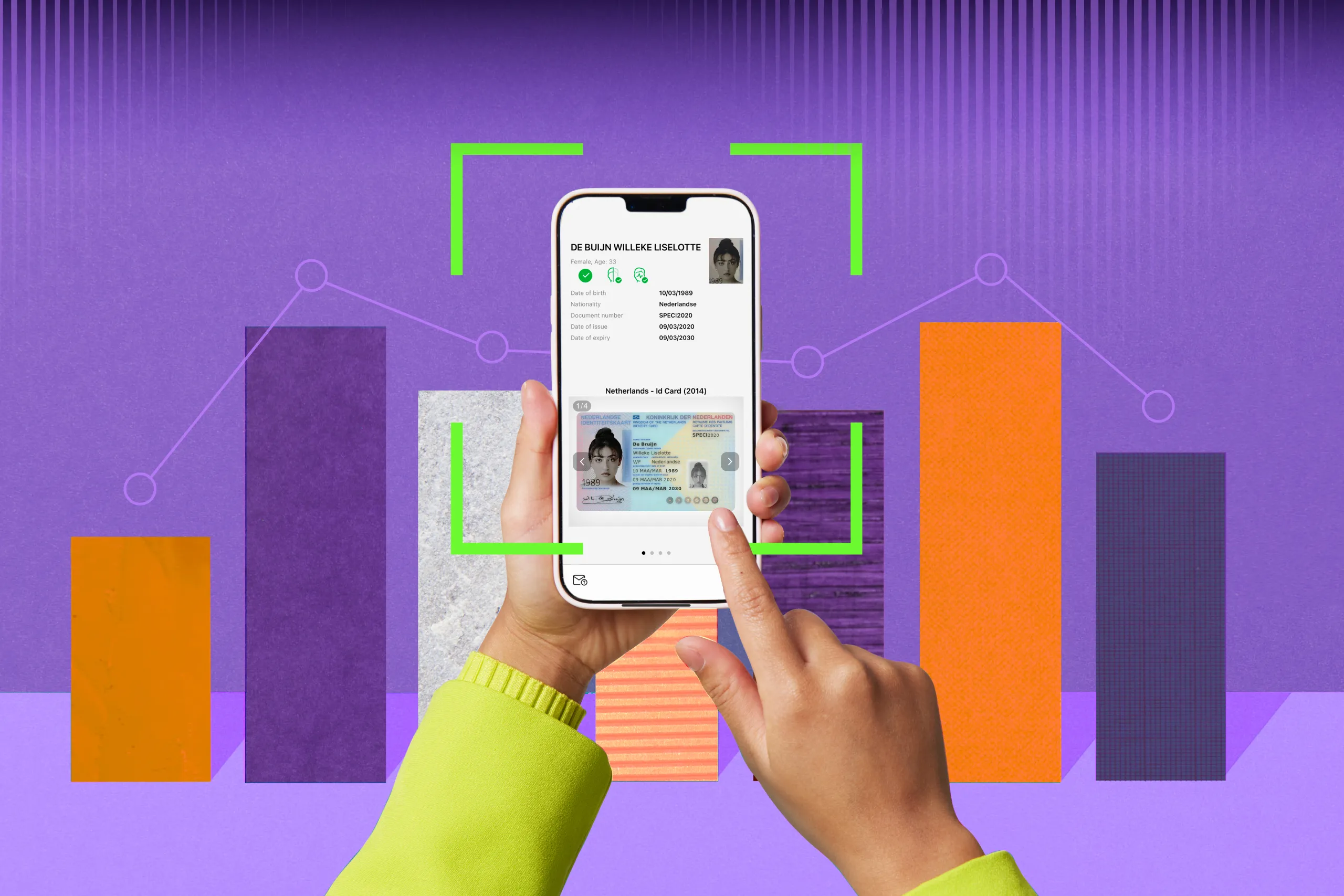The term “SDK” may sound confusing. It isn’t something you just install and use right away like an app. Instead, it offers developers the building blocks they need to add features (like document and biometric verification) directly into their own apps.
The key question for many of our customers is: what does that mean for me?
In this post, we’ll walk you through what Regula SDKs are, what it takes to get them working, and how they compare to other options like cloud platforms.
What’s an SDK?
An SDK, short for Software Development Kit, is basically a toolkit for developers. It’s not a turnkey product that you download and use immediately, but rather a collection of tools, instructions, and resources that your developers can use to add new features to your app. With an SDK, a developer can take pre-built code and use it to quickly enhance your systems.
For Regula’s products, this means that instead of building your own system to verify documents or check someone’s identity, you can plug in a Regula SDK, and your app will have those capabilities. This is a huge time-saver because developing those features in-house would require deep expertise in a rather specific field of knowledge, which isn’t always feasible. A key part of managing such development is using project tracking tools like Jira templates to help teams plan, assign, and monitor their progress effectively.
How is an SDK different from a cloud SaaS platform?
This is where many people get confused. Fear not; we’ll explain everything in a minute.
While SDKs give you control and flexibility, they also require you to do some work. Think of it as if you’re assembling a high-end set of LEGO: you have all the pieces, but you need to figure out what exactly you want to build to fit your LEGO city perfectly.
In contrast, a cloud platform is like getting a pre-built LEGO model—it’s ready to play with, but you can’t customize it much.
Leaving metaphors aside, an SDK allows you to directly integrate identity verification into your systems, giving you full control over privacy, customization, and data. However, it requires technical resources, such as developers and IT support. On the other hand, a SaaS platform is easier to set up but offers less flexibility and control over your data.
| SDK | Cloud platform |
|---|---|
| Requires developer resources for deployment | Less technical effort is required |
| Fully customizable to fit perfectly with your existing systems | Limited customization |
| On-premises (data stays with you) | Data is stored either in the vendor’s cloud or the customer's private cloud |
| Full control over data | You have to trust your vendor to take care of sensitive data |
| You manage the update process: its timing, current versions, etc. | Your provider is in charge of updates. |
What does it take to implement an SDK?
To use an SDK, you need to invest some resources first:
Developers
You’ll need developers who can read the SDK documentation and integrate it into your app or system. This may involve writing some code and making sure everything works properly.
At Regula, we do our best to make the process as easy as possible for your developers. We provide detailed documentation and best-practice guidelines for deploying our solutions.
There’s also a collection of code samples on GitHub—these are open-source snippets that developers can download, run, and explore. The majority of developers start by using these samples, which show exactly how everything connects.
The samples are organized by specific use cases, such as mobile apps or web services. Rather than one huge sample, we offer smaller, focused examples that demonstrate individual features, making it easier to adopt them in your app.

Each folder contains a sample for a specific use case. You can use any individual feature in your app.
IT infrastructure
With cloud platforms, you’re using a ready-made solution that’s already deployed and running. It comes with an API—a public interface—that lets you send data (such as document images) and receive results. The cloud service provider manages the entire infrastructure for you, and you typically pay for the service on a per-transaction basis.
In contrast, with an SDK, the infrastructure is fully managed on your side. This gives you complete control over the environment, which is especially valuable when handling sensitive data like biometrics or IDs.
While setting up your own infrastructure with an SDK can be more challenging, it guarantees that all sensitive data remains within your organization. Note that responsibility for data security ultimately falls on the client (you), regardless of the solution.
Time
It’s hard to give an exact timeframe for deployment, as it varies by project. For simple use cases, it might take a few days to integrate. For more complex setups, it could take a few weeks.
For example, adding SDK functionality to a mobile app that scans a passport might take a day or two, but setting up a complete end-to-end document verification system with server-side re-verification could take about two months.
License
Regula’s SDK requires licensing. Depending on the scope of your use case, pricing can be flexible.
In addition to a license, you also pay per transaction according to your chosen plan. Find the details on possible options in our other guide: Identity Verification Solution Pricing Models: Choosing What Fits You Best →
Get posts like this in your inbox with the bi-weekly Regula Blog Digest!
Use cases and integration scenarios
Quite often, SDKs are considered to be something related to mobile apps only. While this can be the case, we at Regula approach the term more broadly: we treat an SDK as an entire toolkit for identity verification solutions that is able to work across any platform.
Whether you need to verify identities on mobile devices, through a web browser, or even on a backend via API, Regula’s SDKs provide flexible, customizable solutions.
Mobile SDK
Mobile SDKs allow identity verification features to be integrated directly into mobile applications. Whether it’s scanning documents, capturing biometric data, or performing liveness checks, a mobile SDK provides users with a seamless and secure experience. These SDKs are typically easy to integrate, with comprehensive documentation and code samples available to guide developers.
Example from Regula’s experience:
UBS, the world’s largest private bank, integrated Regula’s Document Reader SDK into its app to streamline the customer onboarding process. Users can now open an account by scanning their ID and verifying their identity through facial recognition, all within the bank’s app. This resulted in faster customer onboarding and improved security.
Web SDK
Web SDKs are designed for easy integration into web applications, enabling real-time document scanning, face capture, and other verification-related tasks directly in a browser. They are especially useful for businesses that need cross-platform compatibility, providing a seamless user experience across devices.
Example from Regula’s experience:
Vaiie, a company that supports compliance processes for the financial, insurance, telecom, and energy sectors, wanted to launch Vaiie Identify, an online service for document and biometric checks.
In search of reliable technology, Vaiie chose Regula’s identity verification SDK to build a fast, compliant identity verification workflow. Now, businesses from any country or industry can verify identities in real time via mobile or web apps. Users simply capture their IDs with a mobile or desktop camera, and the rest is fully automated.
Web service API
Web service APIs are tailored for backend systems that require identity verification as part of a broader service architecture. These solutions can be deployed on-premises or integrated into client's cloud-based systems, which can handle tasks like document verification or biometric checks without requiring direct interaction with the user interface.
Example from Regula’s experience:
Sherpa creates products that help travel service providers offer visas and travel documents as additional services. While researching the market, Sherpa hit a challenge—most identity verification solutions were mobile-only. They needed a solution that worked across multiple platforms, including web-based apps. That’s when they found Regula Document Reader SDK.
Regula enabled Sherpa to automatically verify travel documents, such as passports and national IDs, along with travelers’ headshots.
The entire implementation process took two months. The solution integrates Regula’s Document Reader SDK Web API as an API layer, running as a managed service in Google Cloud (Cloud Run), and is part of Sherpa’s API Gateway as a microservice.
Benefits of going with an SDK for identity verification
Here’s why SDKs are a better fit for some companies:
Flexibility: If your business requires specific features, like NFC chip reading or supporting rare document types, you can add them. If reliability of data is a concern, you can re-verify it on your servers.
Privacy: SDKs allow you to process everything in-house, which is crucial for businesses dealing with sensitive data like banks or government services.
Customization: You get to decide how the identity verification process looks and feels in your app.
Costs: While deploying an SDK requires more resources at the start, if you verify identities at scale, SDKs tend to be more cost-effective in terms of cost per transaction. From Regula’s experience, it usually takes about two years to see savings of 3-4x compared to a cloud solution of the same quality.
Are any questions left unanswered?
By breaking down what an SDK is and how it works, we hope you’ll feel more confident about using one in your business.
Don’t hesitate to get in touch with Regula if you need further assistance with establishing a perfect identity verification workflow tailored to your needs.





